Ecuador Overview
Aptly named after the invisible rope that lasso's the world around its middle, the tiny country of Ecuador - tucked into South America's northwestern pocket - seems to encompass a great diversity of its wonders in the same style, despite its small size. Like a miniature replica of the southern continent itself, Ecuador synthesizes the Edenic Galpagos Islands, a gleaming stretch of the Pacific coast, the majestic rib of the Andes Mountains and a wild share of the Amazon Basin into a harmonious landscape that spells paradise for every type of traveler. Ultimately, everything you've ever dreamed of doing, seeing and experiencing on a Latin American adventure can be found here - and more.
Ecuador's compact size and economic living standard make it so refreshingly convenient for travelers to explore its riches that many never leave, and its loyal band of international expats can attest to the unlimited measure of glory the country offers in excess. Though you may never be able to discover it all, you still won't need too much time, money or effort to get an in-depth look at its unique landscapes. Though the country remains overshadowed by neighboring Machu Picchu in Peru or Colombia's Caribbean coastline at the North, Ecuador's low-key personality keeps it pristine for intrepid travelers who prefer the safer, quieter, more relaxed side of the South American story.
 Ecuadorian Woman
Ecuadorian Woman
But convenience takes a backseat to the country's eclectic ethnic cultures and biodiverse ecological species, and though Ecuador is being thrust into modernity, you'll find its environmental and cultural roots brazenly thriving just below the surface. Its mostly mestizo (that is, Spanish and Indian) population represent Ecuador's history, characterized by its successful struggle to create a mixed national identity that's purely one-of-a-kind. For instance, pre-Inca Kichwa communities flourish in accordance with traditional customs up and down the Andean cordillera while Amazonian tribes like the Huorani and Shuar dot the East, or Oriente . Heavily concentrated in the country's northwest Esmeraldas Province are varied communities of Afro-Ecuadorians while the ancient Valdivia culture that hailed from the southeast represents one of the oldest settled peoples in the Americas.
In terms of ecological roots you can count Ecuador as one of the 17 megadiverse countries on the planet, harboring a plethora of endemic species that call the Amazon, Andes or Galpagos home. Along the blurred borders between these contrasting regions you'll find subzones where they clash and give birth to rare terrain like the humid high-alpine pramo and subtropical cloud forests that slope off mountaintops. This is what makes Ecuador one of the world's top places to view wildlife in its natural habitat: funky fish and fearless sea lions swim in schools around the Galpagos, prismatic parrots, toucans and condors patrol the country's skies while pink dolphins and capuchin monkeys populate the Oriente. In fact, packs of llamas crossing interstate roads can make snaking along the Andean cordillera a slow-going business.
With all this in mind, its no wonder why most things to do in Ecuador revolve around ways to enjoy its natural wonders. The country hems in no less than 11 national parks, 10 wildlife refuges and 14 ecological, biological and geobotanical reserves (not including a plethora of private ones). Highlights cover the Avenue of the Volcanoes, a vertical route speckled with snow-capped peaks (many of which are still active,) the Route of the Sun, which snakes up the Pacific coast through mellow fishing villages just miles away from the Galpagos archipelago, and the Amazon Basin, where jungle treks, canoe trips and shamanic ceremonies await within remote pockets of wilderness. In short, consider Ecuador a word synonymous with adventure.
Back in the country's industrialized cities, where you'll undoubtedly be spending some time before jumping off to explore more natural sights, the ambience moves between chaos, charm and glamour in a social dance that personifies metropolitan culture. The capital of Quito, located just miles from the equatorial center of the Earth in a sliver of a valley cupped by volcanoes, is also considered the country's cultural epicenter, while the largest city in Ecuador, Guayaquil, spins off a gulf in the southeast in a dizzying array of sweaty streets and rowdy crowds reminiscent of Cartagena or Havana. From exclusive Galpagos cruises to secluded Amazonian eco-lodges and stately colonial haciendas in the Andes, luxurious travel is easy to come by in Ecuador, too.
So if you're considering a South American trip but can't afford the time and budget restrictions involved in scanning an entire continent, don't completely cross it off your list. Get the best it has to offer without sacrificing a second of action in the country that has it all: Ecuador.
Currency
Since 2000, Ecuador has used the United States Dollar as its currency. Banks in major cities like Quito and Guayaquil give the best exchange rates, while currency exchange bureaus located throughout cities (usually at airports and top-notch hotels) may exchange at lower rates, meaning youll get a little less. ATMs are in all cities but make sure you withdraw before you head to a small pueblo or other out-of-reach village. Unfortunately, some of them (even in Quito) are out of service or dont recognize international cards. In most cases, trying several times does the trick and you shouldnt have serious issues. Make sure to have a 4-digit PIN and let your company know youre going overseas so they dont shut your card off.
If youre coming from the U.S., make sure to bring small bills. Its hard to change large ones in Ecuador, as most people have not seen hundred dollar bills and even twenties are difficult to change in markets and most shops. Also, many hotels do not accept cards but the best ones do. It may be best to reserve ahead of time and pay online.
Tipping is not customary in Ecuador, but the better hotels and restaurants add 12% tax and 10% service charge to your bill. Signage and receptionists will let you know if this is the case. Porters and bellboys however are usually tipped, but taxi drivers arent. If you want to tip a server, hand it to them directly, and for a taxi driver, let them keep the change. For guided tours on the other hand, tipping is definitely encouraged. Many hold degrees in their field or go out of their way to give the best tours but are sadly underpaid (especially in contrast to guides of the same caliber in different countries) so gratuity is appreciated.
Passports & Visas
All U.S. citizens are issued a standard T-3 Tourist Visa which grants travelers 3 months a year in the country, meaning if you cross the border to Colombia or Peru, your time will continue where you left off if you return to Ecuador again. If your three months are up, you cant just cross the border and enter again, visitors will have to return in another year cycle. For longer stays, visas should be pre-arranged with the Ecuadorian Embassy in your home city. Volunteers, NGO workers and expats teaching English in Ecuador will find their organizations will take care of all necessary paperwork. At the time of writing there are no fines for overstaying a visa, but a 9 month waiting period is enforced before being allowed to enter the country again.
Passport information is usually asked for by tour operators and hotels, but dont lug your book with you wherever you go. The most important thing is to never lose it! Make a copy or memorize your passport number to avoid this.
Vaccinations
Make sure to set up an appointment with your healthcare provider at least six weeks before your travel date, especially for kids. Theyll know whats best based on your immunization record, the area youll be traveling to and personal medical history. If you are on a specific medication, make sure you bring more than enough just in case you arent able to acquire it in Ecuador. As an extra precaution, take a prescription or doctors note stating that you were professionally advised to take your medication, as some pharmacies ask for it. Public healthcare is free but higher-standard hospitals and private clinics are also available for a fee; you may want to consider purchasing travel insurance in advance.
Next page
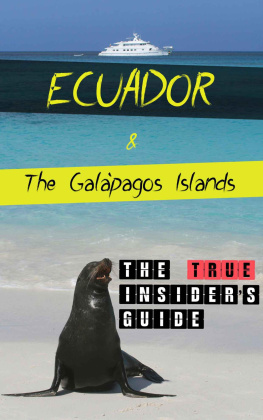
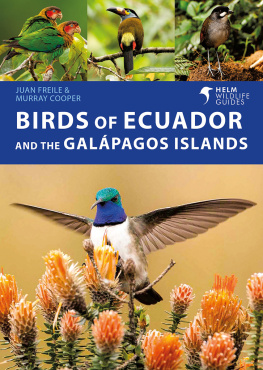


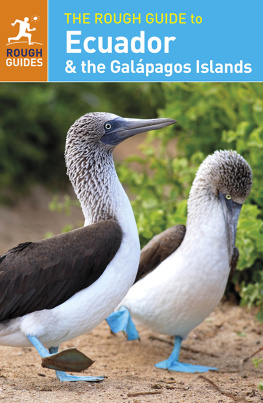
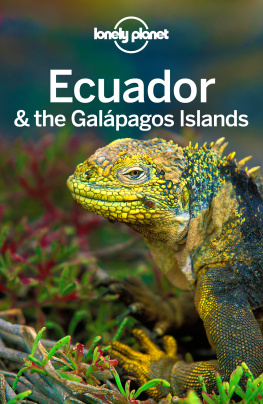

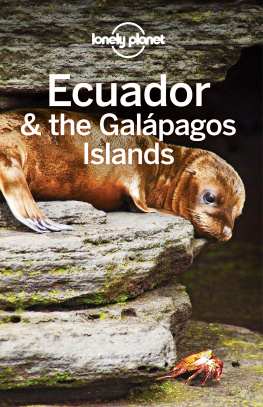

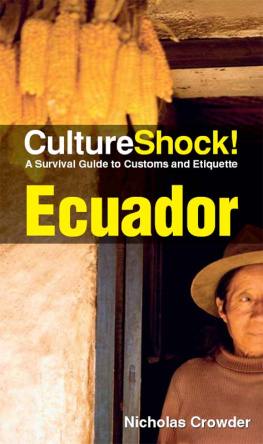
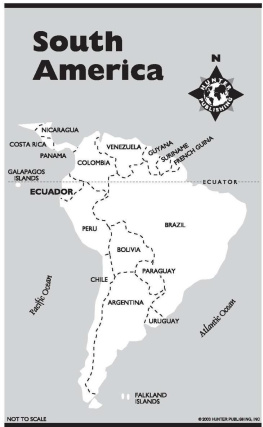
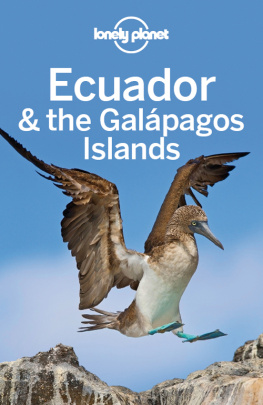
 Ecuadorian Woman
Ecuadorian Woman